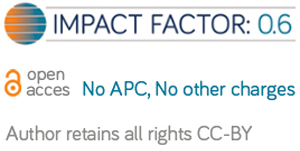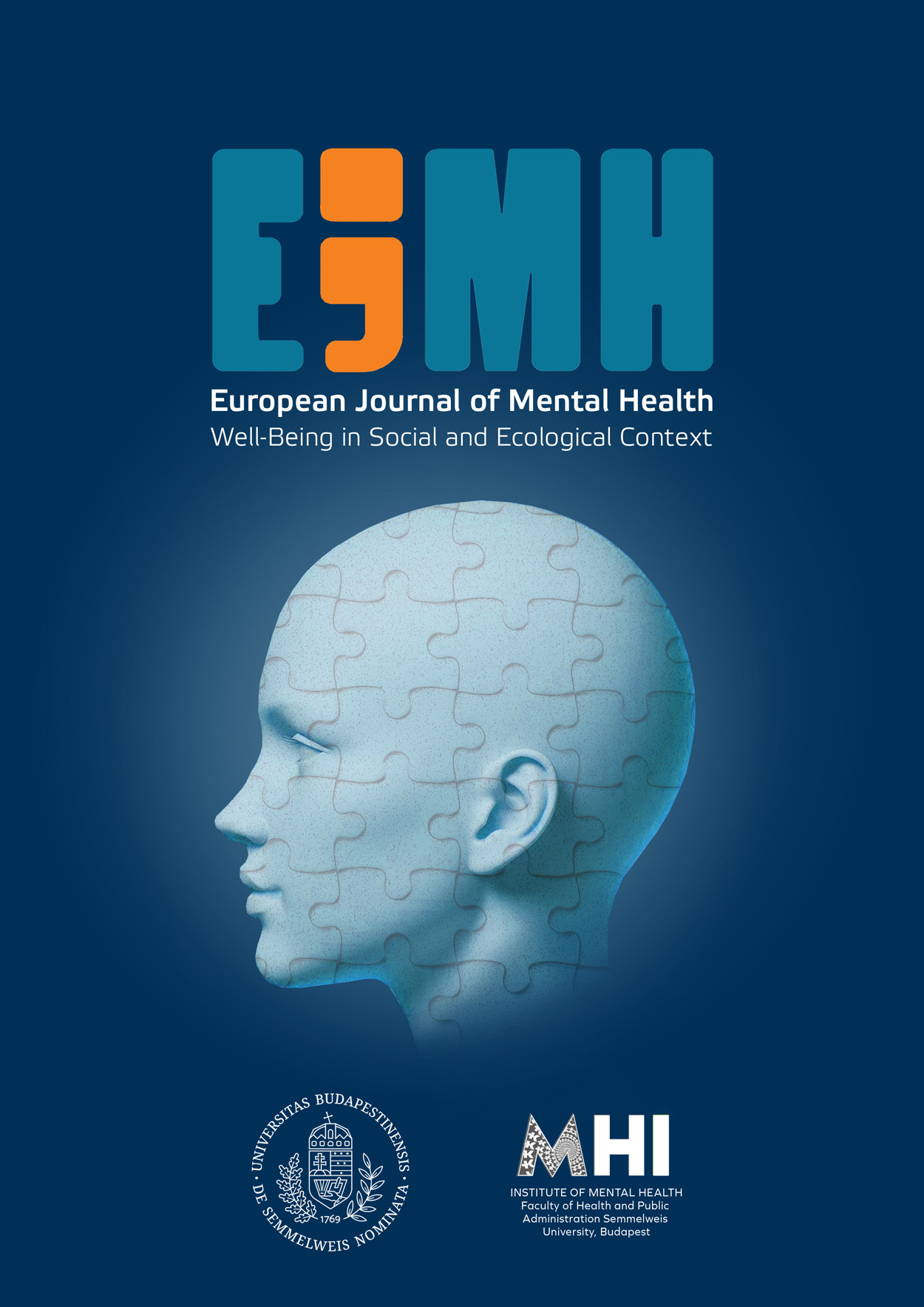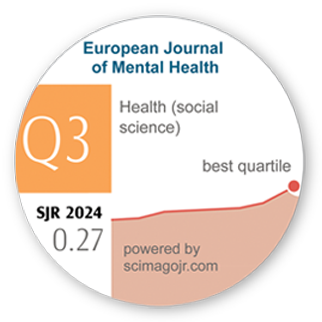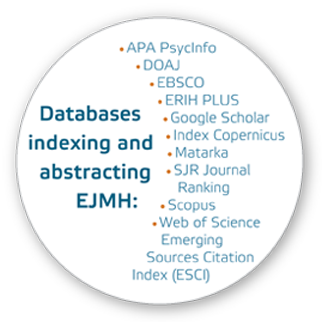Experiencing Mental Health when Treating Others. Experiences of Mental Health Workers in Relation to Mental Health Problems: Stigma, Perception, and Employment
DOI:
https://doi.org/10.5708/EJMH.17.2022.3.1Keywords:
stigma, employment, mental health, barriers, disclosureAbstract
Introduction: Mental health problems are among the leading causes of disability, with one in four adults in the UK experiencing a mental health disorder. Even with the increasing knowledge concerning mental health disorders, two-thirds of those experiencing concerns are reluctant to disclose their condition and seek professional help. This perceived stigma has a strongly negative correlation with help-seeking behavior, and disproportionately affects healthcare professionals; 26% of mental health professionals in England are reported to be resigning due to a reduction of well-being.
Aims: This paper seeks to compare the effects of stigma perceived by mental health and non-mental health professionals, the barriers perceived, and the impact of specific disorders on this stigma.
Methods: Using a mixed-methods approach, a survey was conducted to determine the stigma levels and perceived barriers of 108 people; 50% of these participants were professionals working within mental health services. Two focus groups were conducted, one for mental health professionals and one for non-mental health professionals, with four participants in each group.
Results: The survey reported that mental health professionals had a lower level of stigma for specific disorders, although male mental health professionals working for less than five years reported a higher level of stigma and perceived barriers than did females with the same experience – with these then reducing after five years. The overarching focus group theme was “changes needed for disclosure”, with each group having four subthemes.
Conclusions: Disclosure stigma remains an issue, with further research needing to be conducted to adapt to a minimally stigmatizing service for mental health professionals.
References
Anderson, A., & West, S. G. (2011). Violence against mental health professionals: When the treater becomes the victim. Innovations in Clinical Neuroscience, 8(3), 34–39.
Angermeyer, M., Matschinger, H., & Schomerus, G. (2013). Attitudes towards psychiatric treatment and people with mental illness: Changes over two decades. British Journal of Psychiatry, 203(2), 146–151.
https://doi.org/10.1192/bjp.bp.112.122978
Banks, B. R., Novak, J., Mank, D. M., & Grossi, T. (2007). Disclosure of a psychiatric disability in supported employment: An exploratory study. International Journal of Psychosocial Rehabilitation, 11(1), 69–84.
Barrett, M. S., Chua, W. J., Crits-Christoph, P., Gibbons, M. B., Casiano, D., & Thompson, D. (2008). Early withdrawal from mental health treatment: Implications for psychotherapy practice. Psychotherapy: Theory, Research, Practice, Training, 45(2), 247–267.
https://doi.org/10.1037/0033-3204.45.2.247
British Psychological Society (2021). Building a caring work culture –what good looks like [Webinar].
https://www.delegate-reg.co.uk/dcpwebjun2021
Boyd, J. E., Adler, E. P., Otilingam, P. G., & Peters, T. (2014). Internalized Stigma of Mental Illness (ISMI) scale: A multinational review. Comprehensive Psychiatry, 55(1), 221–231.
https://doi.org/10.1016/j.comppsych.2013.06.005
Boyd, J. E., Otilingam, P. G., & DeForge, B. R. (2014). Brief version of the Internalized Stigma of Mental Illness (ISMI) scale: Psychometric properties and relationship to depression, self esteem, recovery orientation, empowerment, and perceived devaluation and discrimination. Psychiatric Rehabilitation Journal, 37(1), 17–23.
https://doi.org/10.1037/prj0000035
Braun, V., & Clarke, V. (2006). Using thematic analysis in psychology. Qualitative Research in Psychology, 3(2), 77–101.
https://doi.org/10.1191/1478088706qp063oa.
Brohan, E., Henderson, C., Wheat, K., Malcolm, E., Clement, S., Barley, E. A., Slade, M. & Thornicroft, G. (2012). Systematic review of beliefs, behaviours and influencing factors associated with disclosure of a mental health problem in the workplace. BMC Psychiatry, 12(1), Article 11.
https://doi.org/10.1186/1471-244X-12-11
Byrne, P. (2009). Screening Madness: A century of negative movie stereotypes of mental illness. London: Time to Change.
https://www.bl.uk/collection-items/screening-madness-a-century-of-negative-movie-stereotypes-of-mental-illness
Clarke, J. (2004). Mad, bad and dangerous: The media and mental illness. Mental Health Practice, 7(10), 16–19.
Clement, S., Schauman, O., Graham, T., Maggioni, F., Evans-Lacko, S., Bezborodovs, N., Morgan C., Rüsch, N., Brown, J.S.L., & Thornicroft, G. (2015). What is the impact of mental health-related stigma on help-seeking? A systematic review of quantitative and qualitative studies. Psychological Medicine, 45(1), 11–27.
https://doi.org/10.1017/S0033291714000129
Cohen, J. (1988). Statistical power analysis for the behavioral sciences. Lawrence Erlbaum Associates.
Cole, M. (2018). Obsessive compulsive disorder – A case study. York Stress and Trauma Centre.
http://www.ystc.co.uk/stress-trauma-case-study-ocd.html
Connolly, J., Geller, S., Marton, P., & Kutcher, S. (1992). Peer responses to social interaction with depressed adolescents. Journal of Clinical Child Psychology, 21(4), 365–370.
https://doi.org/10.1207/s15374424jccp2104_6
Corrigan, P. W., & Watson, A. C. (2002). Understanding the impact of stigma on people with mental illness. World Psychiatry, 1(1), 16–20.
De Looff, P., Didden, R., Embregts, P., & Nijman, H. (2019). Burnout symptoms in forensic mental health nurses: Results from a longitudinal study. International Journal of Mental Health Nursing, 28(1), 306–317.
https://doi.org/10.1111/inm.12536
Eisenberg, D., Downs, M. F., Golberstein, E., & Zivin, K. (2009). Stigma and help seeking for mental health among college students. Medical Care Research and Review, 66(5), 522–541.
https://doi.org/10.1177/1077558709335173.
Ellison, M. L., Russinova, Z., MacDonald-Wilson, K. L., & Lyass, A. (2003). Patterns and correlates of workplace disclosure among professionals and managers with psychiatric conditions. Journal of Vocational Rehabilitation, 18(1), 3–13.
https://escholarship.umassmed.edu/psych_cmhsr/452
Erdfelder, E., Faul, F., & Buchner, A. (1996). GPOWER: A general power analysis program. Behavior Research Methods, Instruments, & Computers, 28(1), 1–11.
https://link.springer.com/content/pdf/10.3758/BF03203630.pdf
Institute for Behavioural Healthcare Improvement. (2010, February 3). Employees report mixed feelings about seeking health care treatment. IBHI.
https://www.ibhi.net/employees-report-mixed-feelings-about-seeking-health-care-treatment/
Grambal, A., Prasko, J., Kamaradova, D., Latalova, K., Holubova, M., Marackova, M., Ociskova, M. & Slepecky, M. (2016). Self-stigma in borderline personality disorder- Cross-sectional comparison with schizophrenia spectrum disorder, major depressive disorder, and anxiety disorders. Neuropsychiatric Disease & Treatment, 12:2439–2448.
https://doi.org/10.2147/NDT.S114671
Haddad, P., & Haddad, I. (2015). Mental Health Stigma. Articles. British Association of Psychopharmacology.
https://www.bap.org.uk/articles/mental-health-stigma/
Hawke, L. D., Parikh, S. V., & Michalak, E. E. (2013). Stigma and bipolar disorder: A review of the literature. Journal of Affective Disorders, 150(2), 181–191.
https://doi.org/10.1016/j.jad.2013.05.030
Held, P., & Owens, G. P. (2012). Stigmas and attitudes toward seeking mental health treatment in a sample of veterans and active duty service members. Traumatology, 19(2), 136–143.
https://doi.org/10.1177/1534765612455227
Henderson C., Evans-Lacko S., Thornicroft G. (2017). The Time to Change Programme to reduce stigma and discrimination in England and its wider context. In: W. Gaebel, W. Rössler, & N. Sartorius (Eds.), The Stigma of Mental Illness - End of the Story? (pp. 339–356). Springer, Cham.
https://doi.org/10.1007/978-3-319-27839-1_18
Jacob, J., Revesz, T., Thom, M. & Rossor M.N. (1999) A case of sporadic Pick disease with onset at 27 years. Arch Neurol. 56(10), 1289–1291.
https://doi.org/10.1001/archneur.56.10.1289
Karaffa, K. M., & Koch, J. M. (2015). Stigma, pluralistic ignorance, and attitudes toward seeking mental health services among police officers. Criminal Justice and Behavior, 43(6), 759–777.
https://doi.org/10.1177/0093854815613103
Kassam, A., Glozier, N., Leese, M., Henderson, C., & Thornicroft, G. (2010). Development and responsiveness of a scale to measure clinicians’ attitudes to people with mental illness (medical student version). Acta Psychiatrica Scandinavica, 122(2), 153–161.
https://doi.org/10.1111/j.1600-0447.2010.01562.x
Kassam, A., Papish, A., Modgill, G., & Patten, S. (2012). The development and psychometric properties of a new scale to measure mental illness related stigma by health care providers: The Opening Minds Scale for Health Care Providers (OMS-HC). BMC Psychiatry, 12(1), Article 62.
https://doi.org/10.1186/1471-244X-12-62
Kerby, J., Calton, T., Dimambro, B., Flood, C., & Glazebrook, C. (2008). Anti-stigma films and medical students’ attitudes towards mental illness and psychiatry: Randomised controlled trial. Psychiatric Bulletin, 32(9), 345–349.
https://doi.org/10.1192/pb.bp.107.017152
Klin, A., & Lemish, D. (2008). Mental disorders stigma in the media: Review of studies on production, content, and influences. Journal of Health Communication, 13(5), 434–449.
https://doi.org/10.1080/10810730802198813
Langley, J. (2006). Boys get anorexia too: Coping with male eating disorders in the family. Paul Chapman Publishing; SAGE Publications.
https://uk.sagepub.com/en-gb/eur/boys-get-anorexia-too/book228858
Lubian, K., Weich, S., Stansfeld, S., Bebbington, P., Brugha, T., Spiers, N., McManus, S., & Cooper, C. (2016). Chapter 3: Mental health treatment and service use. In S. McManus, P. Bebbington, R. Jenkins, & T. Brugha (Eds.), Mental health and wellbeing in England: Adult Psychiatric Morbidity Survey 2014 (pp.70–105). Leeds: NHS Digital.
https://assets.publishing.service.gov.uk/government/uploads/system/uploads/attachment_data/file/556596/apms-2014-full-rpt.pdf
Mohr, D. C., Hart, S. L., Howard, I., Julian, L., Vella, L., Catledge, C., & Feldman, M. D. (2006). Barriers to psychotherapy among depressed and nondepressed primary care patients. Annals of Behavioral Medicine, 32(3), 254–258.
https://doi.org/10.1207/s15324796abm3203_12
Mojtabai, R., Olfson, M., Sampson, N. A., Jin, R., Druss, B., Wang, P. S., Wells, K.B., Pincus, H.A. & Kessler, R. C. (2011). Barriers to mental health treatment: Results from the National Comorbidity Survey Replication. Psychological Medicine, 41(8), 1751–1761.
https://doi.org/10.1017/S0033291710002291
National Health Service. (2019). Mental health. NSH England. Retrieved May 9, 2019, from
https://www.england.nhs.uk/mental-health/
National Institute for Health and Care Excellence. (2011). Clinical case scenarios for generalised anxiety disorder for use in primary care.
https://www.nice.org.uk/guidance/cg113/resources/clinical-case-scenarios-pdf-pdf-136292509
Oexle, N., Müller, M., Kawohl, W., Xu, Z., Viering, S., Wyss, C., Vetter, S., & Rüsch, N. (2018). Self-stigma as a barrier to recovery: A longitudinal study. European Archives of Psychiatry and Clinical Neuroscience, 268(2), 209–212.
https://doi.org/10.1007/s00406-017-0773-2
Preda, A. & Bota, R., G. (2018). Schizophrenia Common Vignette. Epocrates Online. Retrieved 01 February 2018, from
https://online.epocrates.com/diseases/40622/Schizophrenia/Common-Vignette
Rüsch, N., Angermeyer, M. C., & Corrigan, P. W. (2005). Mental illness stigma: Concepts, consequences, and initiatives to reduce stigma. European Psychiatry, 20(8), 529–539.
https://doi.org/10.1016/j.eurpsy.2005.04.004
Schauman, O., MacLeod, A. K., Thornicroft, G., & Clement, S. (2019). Mental illness related discrimination: The role of self-devaluation and anticipated discrimination for decreased well-being. Stigma and Health, 4(1), 11–18.
https://doi.org/10.1037/sah0000117
Schomerus, G., Angermeyer, M. C., Baumeister, S. E., Stolzenburg, S., Link, B. G., & Phelan, J. C. (2016). An online intervention using information on the mental health-mental illness continuum to reduce stigma. European Psychiatry, 32, 21–27.
https://doi.org/10.1016/j.eurpsy.2015.11.006
Selvaraj, S. (2018). Bipolar disorder in adults Common Vignette. Epocrates Online. Retrieved February 1, 2018, from
https://online.epocrates.com/diseases/48822/Bipolar-disorder-in-adults/Common-Vignette
Stewart, M. C., Keel, P. K., & Schiavo, R. S. (2006). Stigmatization of anorexia nervosa. International Journal of Eating Disorders, 39(4), 320–325.
https://doi.org/10.1002/eat.20262
UNISON. (2017). Struggling to Cope.
https://www.unison.org.uk/content/uploads/2017/10/Struggling-to-Cope.pdf
Wahl, O. F. (1999). Mental health consumers’ experience of stigma. Schizophrenia Bulletin, 25(3), 467–478.
https://doi.org/10.1093/oxfordjournals.schbul.a033394
Webb, M., Peterson, J., Willis, S. C., Rodney, H., Siebert, E., Carlile, J. A., & Stinar, L. (2016). The role of empathy and adult attachment in predicting stigma toward severe and persistent mental illness and other psychosocial or health conditions. Journal of Mental Health Counseling, 38(1), 62–78.
https://doi.org/10.17744/mehc.38.1.05
World Health Organization. (2019). Suicide across the world (2019).
https://www.who.int/publications/i/item/9789240026643






